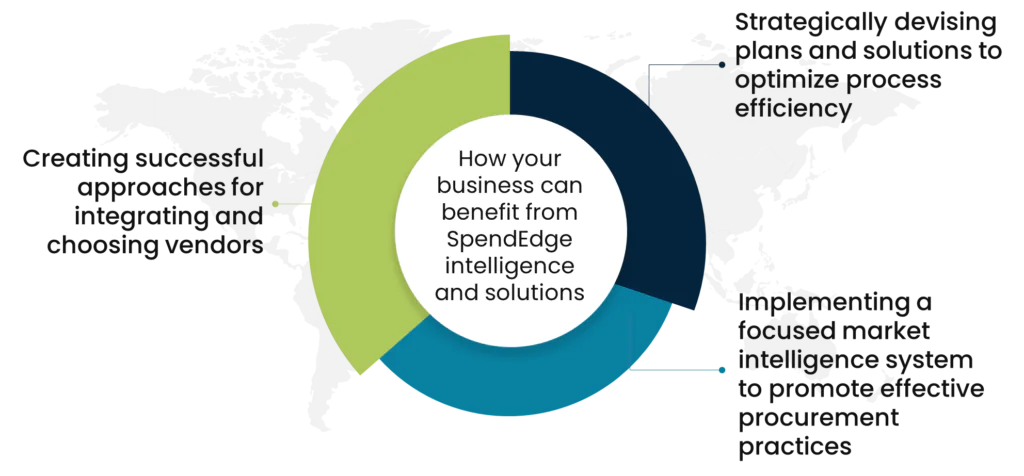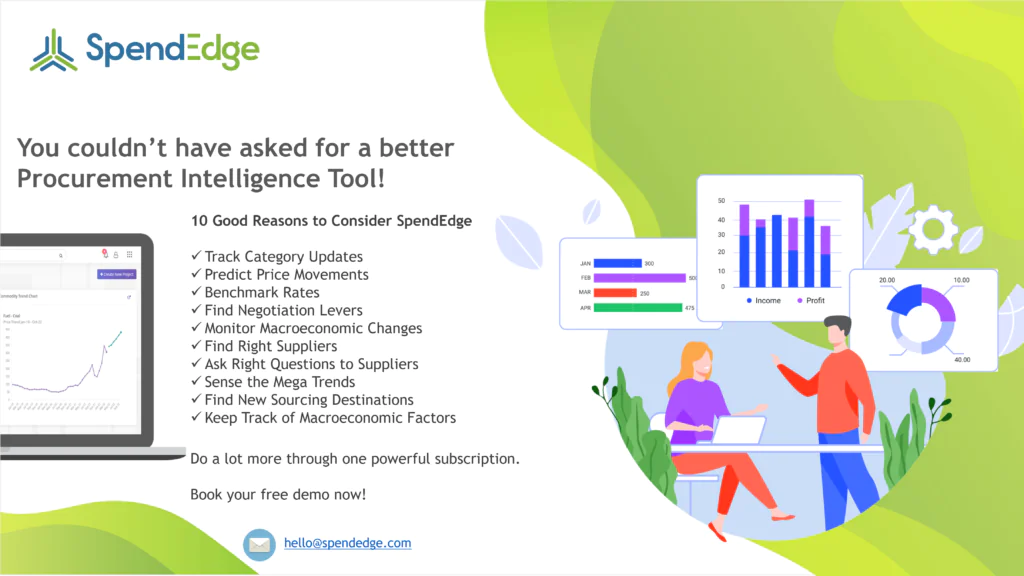By: George Mathew
In today’s interconnected business landscape, effective supply chain management is crucial for gaining a competitive edge. Supply chain analytics software stands out as a vital component in the realm of supply chain management, offering valuable insights and optimizing various facets of the supply chain process. This software empowers procurement teams to make data-driven decisions, optimize costs, manage risks, and enhance overall efficiency. It serves as a valuable tool for organizations striving to remain competitive and agile in a dynamic business environment.
Supply chain analytics employs a systematic process of collecting, integrating, analyzing, and interpreting data to extract valuable insights and optimize different aspects of the supply chain. Effective supply chain analytics relies on seamless data integration from diverse sources such as Enterprise Resource Planning (ERPs) and Internet of Things (IoT) devices. Collaboration with partners through cloud solutions streamlines processes, but cybersecurity is paramount amid rising threats. The future involves the pivotal role of cognitive analytics, utilizing AI for quick disruption assessments. Comprehensive solutions with extensive functionality are essential for handling large volumes of information efficiently
Selecting the appropriate supply chain analytics software for effective supply chain management:
Here are steps to assist you in choosing a supply chain analytics software that aligns with your business objectives and effectively meets your supply chain management requirements –
Embedded or a separate package
Embedded analytics, integrated into ERPs, CRMs, and various supply chain software, frequently fulfill the requirement for descriptive analytics. Although certain enterprise software providers assert predictive analytics functionality, it is crucial to validate this claim since only a limited number of transactional-based software packages can effectively manage unstructured data. This differentiation holds significance as a significant portion of valuable data exists in an unstructured format. Typically, predictive and prescriptive analytics software capable of modeling with unstructured data is distinct and operates independently.
Packaged or platform
Pre-packaged analytics solutions excel in clearly defined scenarios, particularly in areas like sales and retail, primarily for descriptive analytics. However, their limitation lies in their difficulty to adapt to organizations with diverse structures and operational methods, rendering them inadequate in numerous cases. Platforms, on the other hand, offer the benefit of customization to align with specific applications, albeit with the potential downsides of increased complexity and higher costs.
Constraint or algorithm-based programming
Traditionally, computer programming relied on syntax to instruct tasks, evolving into high-level languages resembling human language. Developers created algorithms for data analysis and mathematical optimizations, but this process is time-consuming. The emergence of fifth-generation programming languages introduced a paradigm shift, emphasizing constraint-based modeling. Models prioritize constraints, ensuring thorough consideration of each impact. In fifth-generation constraint-based modeling, visual tools simplify model construction, adding a layer of simplicity to the overall approach.
On-premise or cloud-based supply chain analytics software
Many supply chain analytics software providers offer cloud-based solutions, leveraging flexibility and cost-effectiveness, which is advantageous for companies with limited IT expertise. With cloud-based solutions, vendors host the software, reducing user concerns. Cloud applications inherently scale, facilitating seamless expansion alongside business growth.
On-premise solutions provide an alternative for organizations reluctant to externalize data beyond corporate firewalls, particularly those with the requisite IT and operations research skills.
Visualization
Fundamentally, the capability to visualize and scrutinize results is crucial. Likewise, input information should be readily visible, and ideally, the model should offer transparency, enabling users to comprehend its workings. While these features are inherent in some instances, in others, they may need to be developed.
How SpendEdge can assist in transforming supply chain process through supply chain analytics software

To have a clear understanding of our services at SpendEdge
Creating successful approaches for integrating and choosing vendors:
Our team of sourcing specialists plays a crucial role in guiding companies through intricate procurement challenges. They assist businesses in selecting optimal software providers and seamlessly incorporating their products into current infrastructure. Our comprehensive services encompass vendor assessment, negotiation, implementation, quality control, and continuous support. Additionally, our experts provide valuable insights on requirements analysis, market research, vendor assessment, strategy development, and risk management, ensuring that businesses make informed and cost-effective decisions.
Strategically devising plans and solutions to optimize process efficiency:
Our specialists at SpedEdge offer a systematic approach to enhance an organization’s procurement procedures. By conducting a thorough assessment of existing processes, understanding unique requirements, and crafting customized strategies, we empower organizations to integrate procurement ERP systems that align seamlessly with their goals. This leads to increased efficiency and long-term cost-effectiveness.
Implementing a focused market intelligence system to promote effective procurement practices:
Our advisors implement a consistent benchmarking process against industry peers and competitors to pinpoint evolving best practices. They consistently assess and improve sourcing and sustainability practices by staying updated on the latest industry trends and innovations. Our approach includes devising a systematic method to stay informed about competitors’ advancements in sourcing and sustainability through activities such as market research and engagement with industry publications.
Success Story: How we helped the leading oil and gas company transform its supply chain process
Our client holds a significant position in the worldwide oil and gas sector, involved in the exploration, extraction, and refinement of crude oil and natural gas.
The company faced challenges in optimizing its supply chain operations. The company sought to leverage technology solutions to enhance efficiency, reduce costs, and gain a competitive edge in the market.
Our experts conducted thorough interviews with key stakeholders to understand the client’s current technology landscape and challenges. They analyzed existing processes, researched competitors in the oil and gas industry, and identified areas for improvement. Leveraging supplier intelligence tools, our experts evaluated potential technology providers, aligning their capabilities with the client’s specific needs. Their recommendation report highlighted cost-effective, scalable technology solutions. Finally, our experts assisted in implementing customized supply chain analytics software, offering real-time insights into inventory management, demand forecasting, and supplier performance for the oil and gas industry.
The implementation of our solutions and supply chain analytics substantially improved the client’s supply chain operations, providing a competitive advantage in the dynamic oil and gas industry.

Contact us now to solve your procurement problems!
Author’s Details
George Mathew
Associate Vice President, Sourcing and Procurement Intelligence
George is a procurement specialist at Infiniti Research and provides advisory services to clients across the pharmaceutical, CPG & FMCG, energy, and automotive sectors. He specializes in the procurement areas of industry benchmarking, cost modeling, rate card benchmarking, negotiation advisory, and supplier intelligence.




